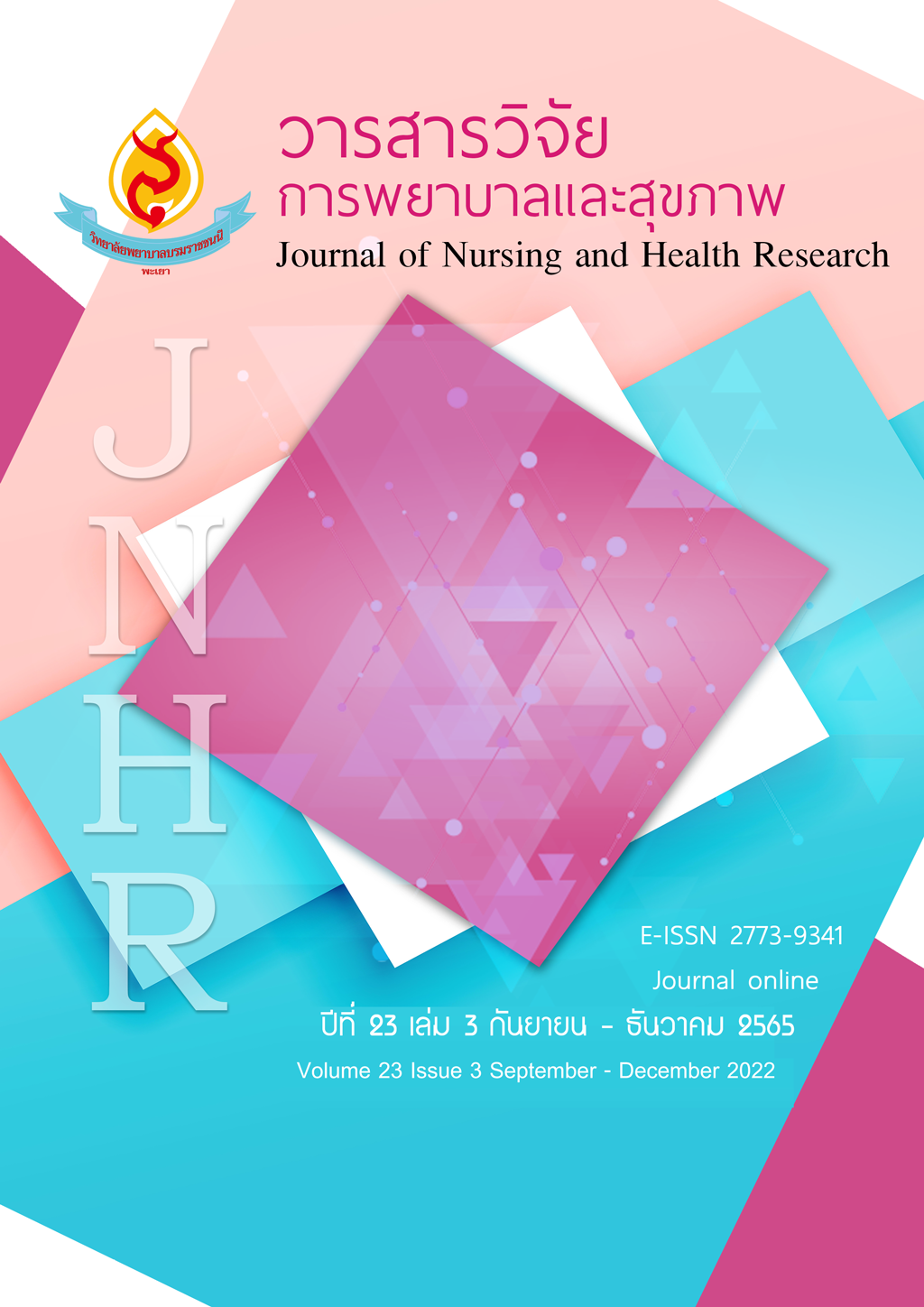รูปแบบการพยาบาลผู้ป่วยภาวะหัวใจขาดเลือดเฉียบพลันภายหลังได้รับการถ่างขยาย หลอดเลือดหัวใจของโรงพยาบาลเชียงรายประชานุเคราะห์
คำสำคัญ:
ผู้ป่วยภาวะหัวใจขาดเลือดเฉียบพลัน, การถ่างขยายหลอดเลือดหัวใจ, รูปแบบการพยาบาลบทคัดย่อ
การเกิดภาวะหัวใจขาดเลือดเฉียบพลันในผู้ป่วยจำเป็นต้องให้การดูแลอย่างเร่งด่วน การพัฒนารูปแบบการพยาบาลผู้ป่วยภาวะหัวใจขาดเลือดเฉียบพลันจึงเป็นบทบาทสำคัญของพยาบาลด้านโรคหลอดเลือดหัวใจ การศึกษาวิจัยและพัฒนาครั้งนี้ มีวัตถุประสงค์เพื่อพัฒนาและประเมินผลลัพธ์รูปแบบการพยาบาลผู้ป่วยภาวะหัวใจขาดเลือดเฉียบพลันภายหลังได้รับการถ่างขยายหลอดเลือดหัวใจ กลุ่มตัวอย่าง ได้แก่ พยาบาลที่ปฏิบัติงานในหอผู้ป่วยหนักโรคหัวใจและหอผู้ป่วยสามัญอายุรกรรม จำนวน 26 คน และผู้ป่วยที่ได้รับการรักษาด้วยการทำหัตถการถ่างขยายหลอดเลือดหัวใจ จำนวน 52 คน โดยแบ่งเป็น 2 กลุ่มคือ กลุ่มก่อนพัฒนารูปแบบการพยาบาลฯ จำนวน 26 ราย และกลุ่มหลังพัฒนารูปแบบการพยาบาลฯ จำนวน 26 ราย เครื่องมือที่ใช้ในการวิจัยครั้งนี้ ประกอบด้วย เครื่องมือที่ใช้ในการรวบรวมข้อมูล ได้แก่ 1) แบบบันทึกข้อมูลส่วนบุคคลและข้อมูลการเจ็บป่วยของผู้ป่วย 2) ข้อมูลส่วนบุคคลของพยาบาล 3) แบบประเมินผลลัพธ์ทางคลินิกที่เกิดขึ้นกับผู้ป่วยและ 4) แบบประเมินผลลัพธ์ด้านพยาบาลผู้ปฏิบัติ ส่วนเครื่องมือที่ใช้ในการวิจัย คือรูปแบบการพยาบาลผู้ป่วยภาวะหัวใจขาดเลือดเฉียบพลันภายหลังได้รับการถ่างขยายหลอดเลือดหัวใจ วิเคราะห์ข้อมูลโดยใช้สถิติบรรยายและสถิติทดสอบทีกลุ่มเดียวที่ไม่เป็นอิสระจากกัน ผลการวิจัย พบว่า รูปแบบการพยาบาลผู้ป่วยภาวะหัวใจขาดเลือดเฉียบพลัน ภายหลังได้รับการถ่างขยายหลอดเลือดหัวใจที่พัฒนาขึ้น ประกอบด้วย 1) การพยาบาลหลังรับจากห้องสวนหัวใจ 2) การพยาบาลเพื่อป้องกันภาวะแทรกซ้อนใน 24 ชั่วโมงแรก 3) การฟื้นฟูสมรรถภาพหัวใจภายใน 24-48 ชั่วโมง และ 4) การวางแผนจำหน่ายตามกระบวนการวางแผนจำหน่ายผู้ป่วย ผลของการใช้รูปแบบการพยาบาลผู้ป่วยภาวะหัวใจขาดเลือดเฉียบพลันภายหลังได้รับการถ่างขยายหลอดเลือดหัวใจ พบว่า พยาบาลวิชาชีพปฏิบัติตามรูปแบบการพยาบาลฯ ร้อยละ 92.31 มีระดับความพึงพอใจต่อการใช้รูปแบบการพยาบาลฯ ในระดับมากที่สุด ร้อยละ 22.44 ระดับมาก ร้อยละ 61.54 และพบว่า ภาวะแทรกซ้อนจากอัตราภาวะเลือดออกที่แผล ความวิตกกังวล และคุณภาพชีวิตของผู้ป่วย มีความแตกต่างกับก่อนการพัฒนารูปแบบการพยาบาลฯ อย่างมีนัยสำคัญทางสถิติ (p<.01) รูปแบบการพยาบาลฯ ที่พัฒนาขึ้นสามารถป้องกันภาวะแทรกซ้อนและเพิ่มคุณภาพชีวิตผู้ป่วยได้ ผู้บริหารทางการพยาบาลสามารถนำผลการวิจัยไปใช้เป็นแนวทางในการส่งเสริมสมรรถนะพยาบาลวิชาชีพและพัฒนาคุณภาพการพยาบาลโรคหัวใจ
เอกสารอ้างอิง
งานศูนย์ข้อมูลและสารสนเทศ โรงพยาบาลเชียงรายประชานุเคราะห์. (2565). สรุปรายงานประจำปี 2565. เชียงราย: โรงพยาบาลเชียงรายประชานุเคราะห์.
พิราวรรณ โต่งจันทร์, อําภาพร นามวงศ์พรหม และนํ้าอ้อย ภักดีวงค์. (2559). ความวิตกกังวลความพึงพอใจและภาวะแทรกซ้อนในผู้ป่วยที่ได้รับการพยาบาลตามแนวปฏิบัติการสวนหัวใจ. วารสารการพยาบาลและการดูแลสุขภาพ . 3(1), 34–40.
วรพรรณ มหาศรานนท์, ฐิติอาภา ตั้งค้าวานิช และรุ้งนภา ชัยรัตน์. (2562). ผลของโปรแกรมการพยาบาลแบบสนับสนุนและให้ความรู้มีผลต่อการดูแลตนเองและคุณภาพชีวิตของผู้ป่วยโรคหัวใจขาดเลือด. วารสารพยาบาลโรคหัวใจและทรวงอก, 30(1), 102-116.
สมาคมแพทย์โรคหัวใจแห่งประเทศไทย ในพระบรมราชูปถัมภ์. (2563). แนวเวชปฏิบัติการดูแลรักษาผู้ป่วยภาวะหัวใจขาดเลือดเฉียบพลัน พ.ศ. 2563. สมุทรปราการ: ห้างหุ้นส่วนจำกัด เนคสเตป ดีไซน์.
เสาวนีย์ ชนะพาล. (2558). ผลของโปรแกรมการสนับสนุนทางสังคมต่อพฤติกรรมการจัดการตนเองในผู้สูงอายุที่เป็นโรคไตเรื้อรังระยะก่อนการบำบัดทดแทนทางไต (วิทยานิพนธ์ปริญญามหาบัณฑิต). กรุงเทพฯ: จุฬาลงกรณ์มหาวิทยาลัย.
อภิชาต สุคนธสรรพ์และศรัณย์ ควรประเสริฐ (บก.). (2557). Evolution in cardiovascular medicine. เชียงใหม่: ทริค ธิงค์
เอื้อมเดือน นิลพฤกษ์, ชนกพร จิตปัญญา และระพิณ ผลสุข. (2561). การศึกษาภาวะเครียดหลังเกิดเหตุการณ์สะเทือนขวัญในผู้ป่วยกล้ามเนื้อหัวใจตายเฉียบพลัน. วารสารแพทย์นาวี, 45(2), 289–310.
Bandura, A. (1997). Self-efficacy: The exercise of control. New York: Freeman.
Kala, P., Hudakova, N., Jurajda, M., Kasparek, T., Ustohal, L., Parenica, J., ... Kanovsky, J. (2016). Depression and Anxiety after Acute Myocardial Infarction Treated by Primary PCI. PLOS ONE, 11(4), e0152367. https://doi.org/10.1371/journal.pone.0152367
Melnyk, B.M., & Fineout-Overholt, E. (2018). Evidence-based practice in nursing & healthcare. a guide to best practice (4th ed.). Philadelphia, PA: Wolters Kluwer.
Muangin, W., Akarawanasakun, B., Wongkaew, O., & Mongkhonittivech, N. (2020). Outcomes of nursing clinical practice guideline development for septic shock in medical intensive care Unit at chiangrai prachanukroh hospital. Journal of Nursing Science & Health, 43(1), 97-108.
Proctor, B. (2010). Training for the supervision alliance attitude, skills and intention. In Fundamental Themes in clinical Supervision: 25-46. London: Routledge.
Soukup S. M. (2000). The center for advanced nursing practice evidence-based practice model: promoting the scholarship of practice. The Nursing Clinics of North America, 35(2), 301–309.
The Joanna Briggs Institute. (2014). Reviewers’ Manual 2014 Edition. Australia: Solito Fine Colour Printers. Retrieved May 1, 2016 from http: www.joannabriggs.org/assets/ docs/sumari/reviewersmanual-2014.pdf
Trotter, R., Gallagher, R., & Donoghue, J. (2011). Anxiety in patients undergoing percutaneous coronary interventions. Heart Lung, 40(3), 185-192.
World Health Organization (2022). Trends in cause-specific mortality by all age-groups for a selected country or area and sex. Retrieved 4 April 2022, from heme-details/topics/indicator-groups/indicator-group-details/MDB/ischaemic-heart-disease
ดาวน์โหลด
เผยแพร่แล้ว
รูปแบบการอ้างอิง
ฉบับ
ประเภทบทความ
สัญญาอนุญาต
ลิขสิทธิ์ (c) 2022 วารสารวิจัยการพยาบาลและสุขภาพ

อนุญาตภายใต้เงื่อนไข Creative Commons Attribution-NonCommercial-NoDerivatives 4.0 International License.



